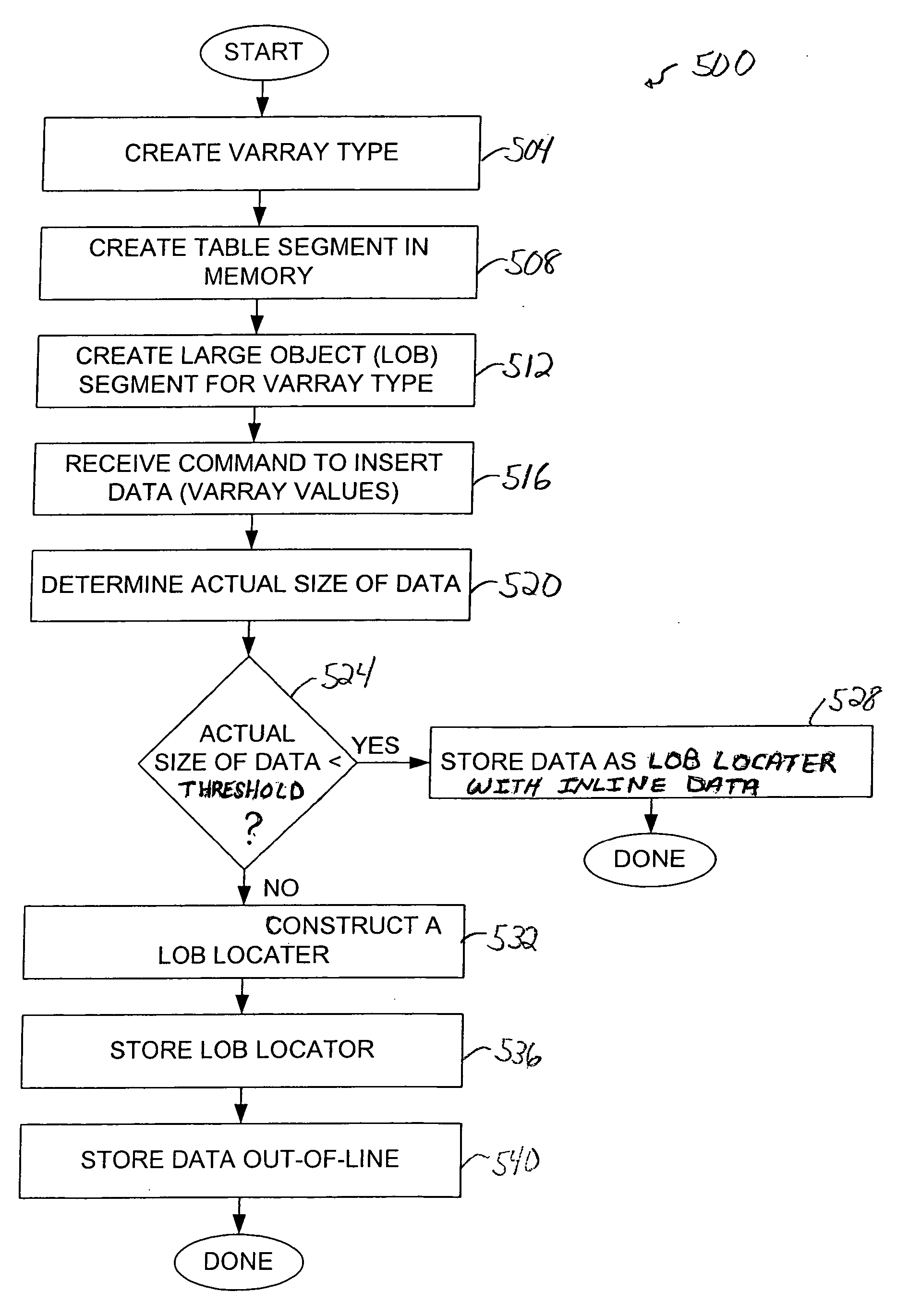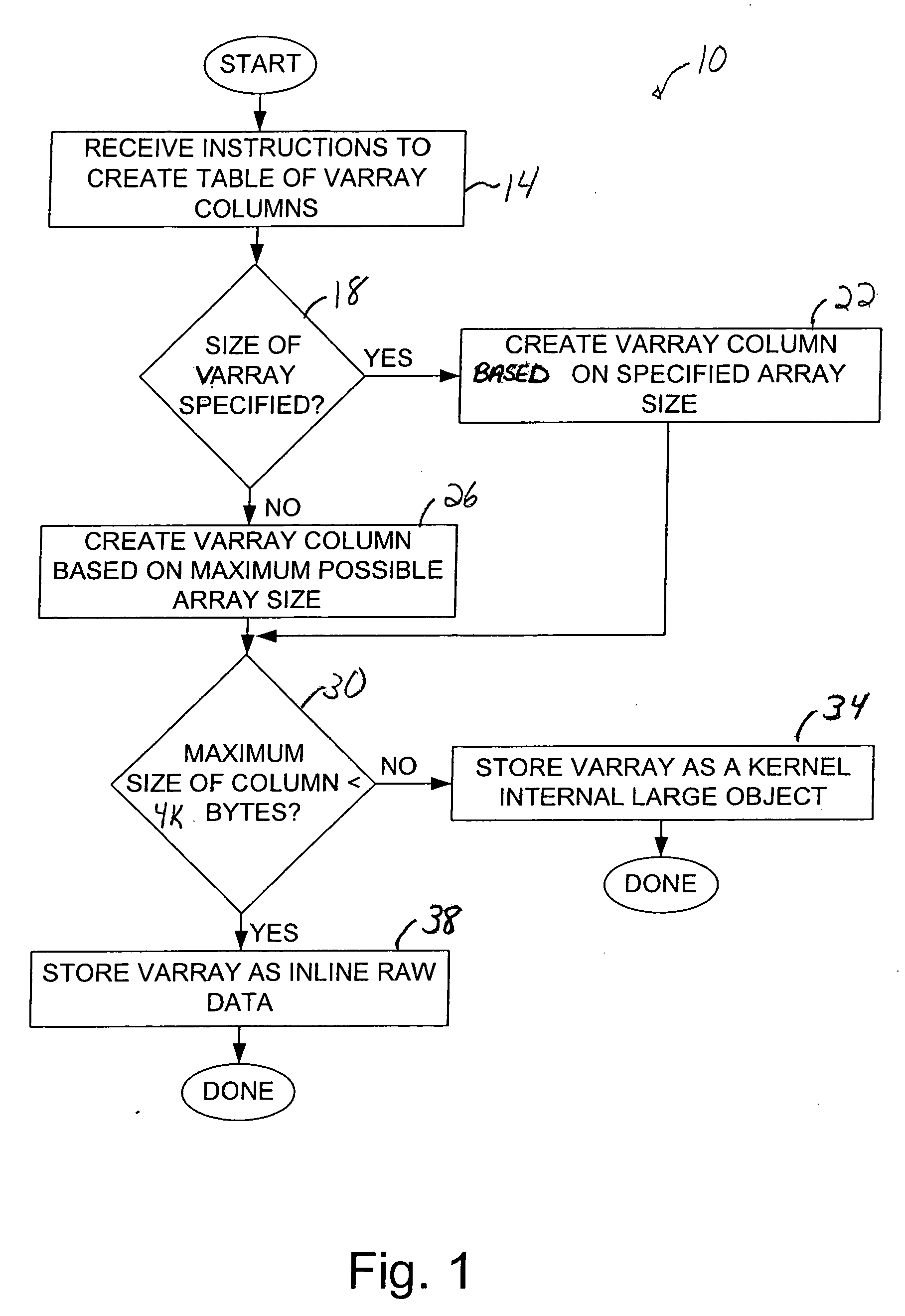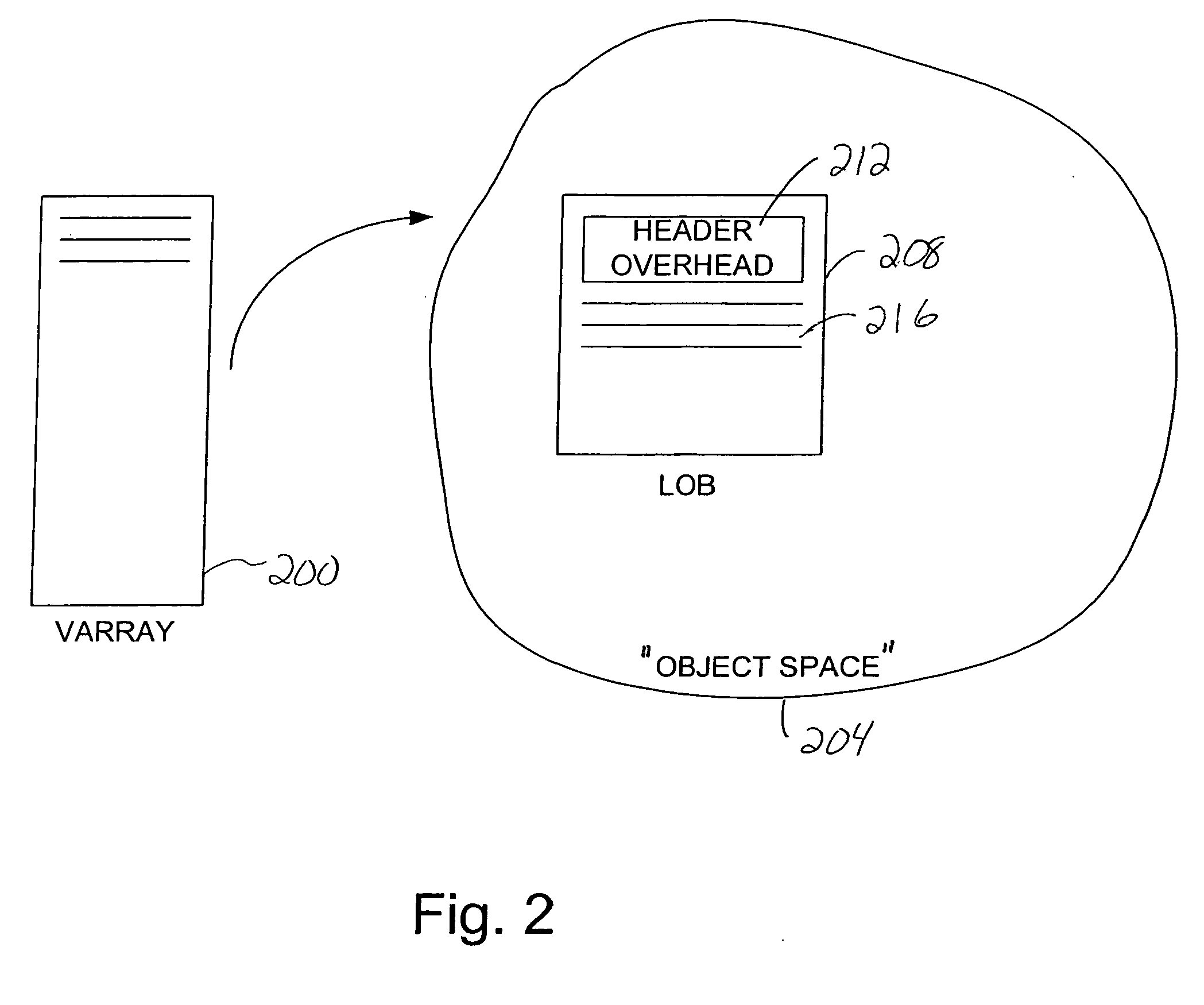Storage optimization for VARRAY columns
a technology of varray columns and storage optimization, applied in the field of database systems, can solve the problems of affecting the efficiency with which data write and data read operations may be performed, performance issues may arise during data write and data read operations, and varray data storage in varray columns is effectively optimized. , to achieve the effect of efficient data storage and efficient optimization
- Summary
- Abstract
- Description
- Claims
- Application Information
AI Technical Summary
Benefits of technology
Problems solved by technology
Method used
Image
Examples
Embodiment Construction
[0035] In the description that follows, the present invention will be described in reference to embodiments that test subsystems on a platform for a software application, such as a database application. However, embodiments of the invention are not limited to any particular architecture, environment, application, or implementation. For example, although embodiments will be described in reference to database applications, the invention may be advantageously applied to any software application. Therefore, the description of the embodiments that follows is for purposes of illustration and not limitation.
[0036] A variable array (VARRAY) type is generally used to represent a variable-length ordered set of elements. Since the size of the actual data stored in a VARRAY is also variable, the amount of storage space needed to store VARRAY data associated with the VARRAY may vary widely. When a VARRAY type is specified without an array limit, the VARRAY is typically created based on the maxi...
PUM
 Login to View More
Login to View More Abstract
Description
Claims
Application Information
 Login to View More
Login to View More - R&D
- Intellectual Property
- Life Sciences
- Materials
- Tech Scout
- Unparalleled Data Quality
- Higher Quality Content
- 60% Fewer Hallucinations
Browse by: Latest US Patents, China's latest patents, Technical Efficacy Thesaurus, Application Domain, Technology Topic, Popular Technical Reports.
© 2025 PatSnap. All rights reserved.Legal|Privacy policy|Modern Slavery Act Transparency Statement|Sitemap|About US| Contact US: help@patsnap.com



